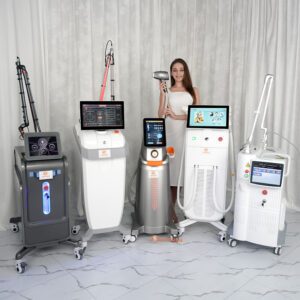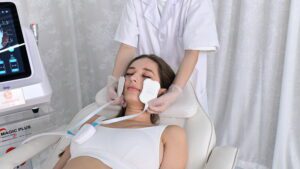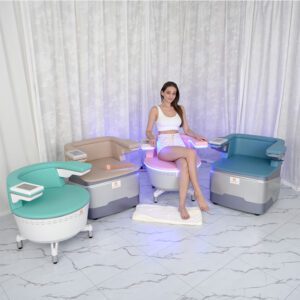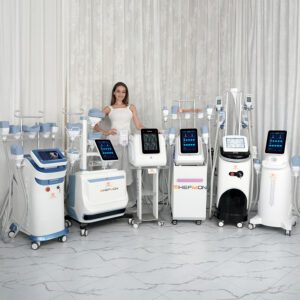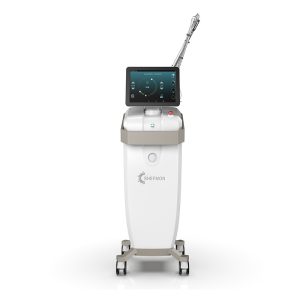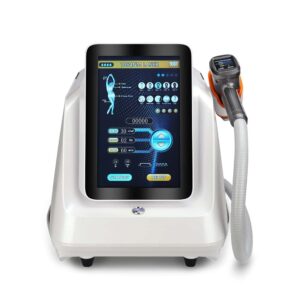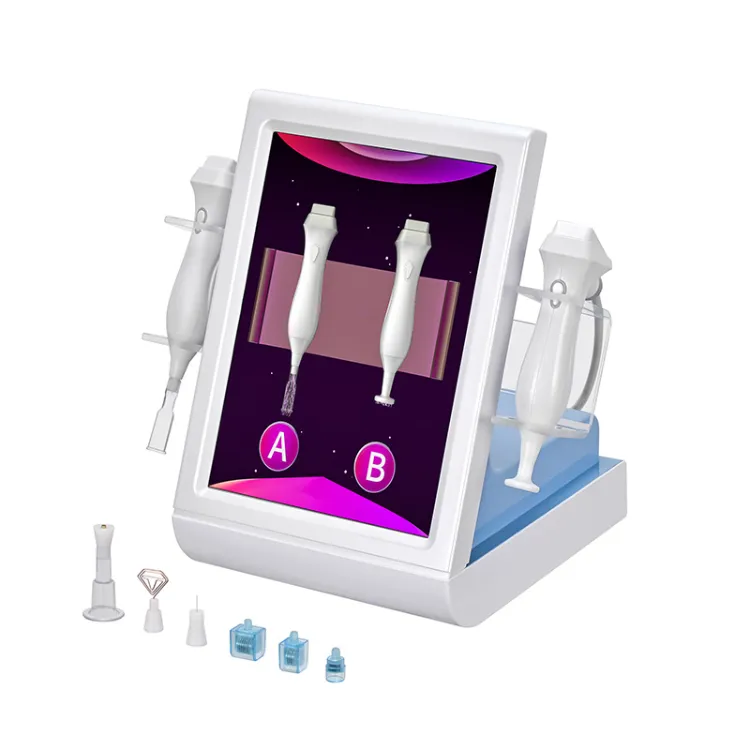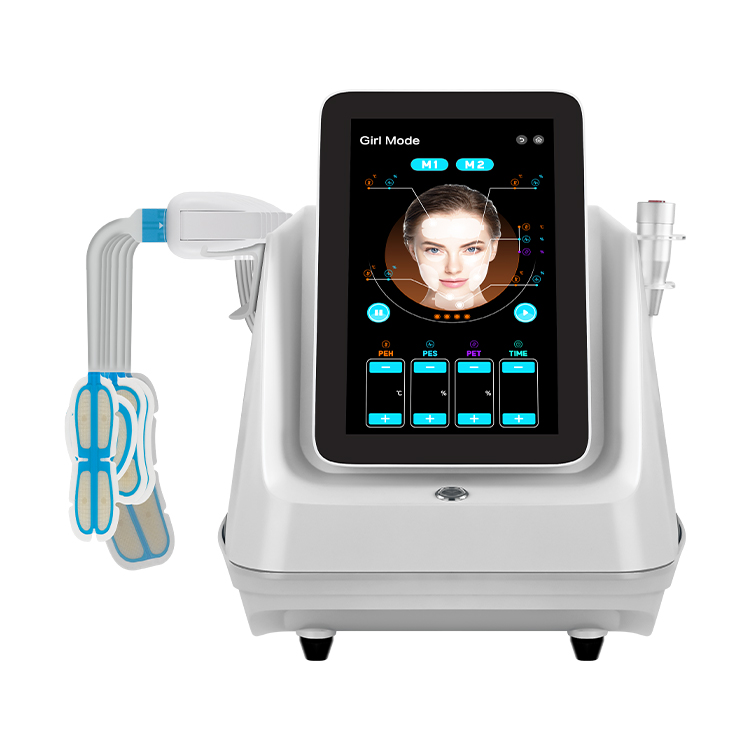
Uno de los principales problemas que enfrenta el sistema sanitario mundial hoy en día es el exceso de peso corporal.. Resulta en tasas más altas de morbilidad y mortalidad, así como gastos médicos costosos.. Como resultado, Tiene sentido enfatizar el valor de una dieta sensata y frecuente, ejercicio de intensidad moderada. El enfoque más exitoso para tratar a los pacientes con síndrome metabólico es cambiar su estilo de vida.. La asistencia intrigante adicional para la pérdida de peso puede provenir de terapias de contorno del cuerpo no invasivas proporcionadas por Cosmetic Medicine o Cosmetology. Una técnica para tratar la obesidad se llama cavitación de grasa de ultrasonido, que implica reestructurar una porción particular del cuerpo al molestar a los adipocitos.
Comprensión de la cavitación ultrasónica
La ciencia detrás de la cavitación ultrasónica
La cavitación de ultrasonido utiliza presión de sonido cíclico a una frecuencia más alta que el límite superior de la audición humana. Una técnica para tratar la obesidad se llama cavitación de grasa de ultrasonido, que implica reestructurar una porción particular del cuerpo al molestar a los adipocitos.
Las células grasas se interrumpen mecánicamente por la energía de ultrasonido administrada por dispositivos de ultrasonido de baja frecuencia a través de la piel. Su mecanismo de acción no térmico lo hace generalmente bien tolerado. La cavitación de ultrasonido es un enfoque no quirúrgico que tiene el potencial de reducir los problemas relacionados con la obesidad debido a su riesgo reducido y una mayor rentabilidad en comparación con la liposucción por ultrasonido invasivo.
Usos comunes de la cavitación ultrasónica
Abdomen: Utilizado para la reducción de grasas del abdomen, dirigirse a la grasa del vientre para contornear la cintura y crear un estómago más plano.
Muslos: Ayuda a reducir la grasa interna y externa del muslo, resultando en piernas más delgadas y tonificadas.
Caderas: Apunte a disminuir la grasa alrededor de las caderas y las manijas de amor, Mejorar las curvas naturales del cuerpo.
Nalgas: Se enfoca en reducir la grasa para mejorar la forma, elevar, y firmeza de las nalgas.
Brazos superiores: Apunta a la grasa en la parte superior de los brazos para reducir la apariencia de “alas de murciélago” y mejorar el contorno del brazo.
Atrás: Aborda los depósitos de grasa en la parte superior e inferior de la espalda, incluyendo el área de abultamiento del sujetador, para un perfil de espalda más suave.
Flancos (Manijas del amor): Reduce la grasa a los lados del abdomen para eliminar las manijas del amor y crear una cintura más definida.
Barbilla y cuello: Reduce la apariencia de una barbilla doble y contornos la línea de la mandíbula para un perfil facial más definido.
Terneros: Apunta a la grasa en el área de la pantorrilla para adelgazar y dar forma a la parte inferior de las piernas.
Pecho (para hombres): Se utiliza para reducir el exceso de grasa en el área del pecho, a menudo referido como “tetas de hombre” o ginecomastia, resultando en un cofre más firme y masculino.
Leer también: Cavitación por ultrasonido antes y después de los resultados
Ultrasónico antes y después: Evidencia científica e investigación para la efectividad

Muchos estudios han probado los impresionantes antes y después de los resultados de la cavitación ultrasónica.. Por ejemplo, en uno estudiar ,Se lleva a cabo un ensayo controlado aleatorio para reforzar la eficacia de la cavitación ultrasónica. Basado en criterios de selección específicos, Cuarenta pacientes fueron elegidos y divididos en dos grupos. : El grupo B recibió solo una dieta baja en calorías y ejercicio aeróbico, mientras que el grupo A recibió cavitación ultrasónica y ambos. El estudio encontró que el Grupo A tenía una mayor tasa de reducción de grasa., Confirmando la hipótesis alternativa. Como resultado, La estrategia de reducción de grasa empleada en este grupo puede tenerse en cuenta.
Los resultados mostraron que, in comparison to aerobic exercise and a low-calorie diet, the combined effect of ultrasonic cavitation, aerobic workouts, and a low-calorie diet was more effective in reducing body weight, BMI, and circumference at the waist.
Cavitación ultrasónica y cáncer – The Concerns
Ultrasonic cavitation is a popular non-invasive cosmetic procedure used to break down fat cells using ultrasound waves. Given the rise in its popularity, there is growing concern among individuals about its long-term health effects, specifically the potential risk of cancer. These concerns stem from a general apprehension that exposure to certain types of energy or physical interventions might initiate or accelerate cancer development.
General Mechanisms of Cancer Development
Cancer develops due to uncontrolled cell division and the ability of these cells to invade other tissues. Este proceso generalmente comienza con mutaciones genéticas o cambios en el ADN que interrumpen la regulación celular normal. Las mutaciones pueden ser causadas por varios factores, incluyendo exposiciones ambientales, opciones de estilo de vida, y rasgos genéticos hereditarios. Cuando estas mutaciones afectan los genes que controlan el crecimiento y la división celular, tales como oncogenes o genes supresores de tumores, Las células pueden comenzar a crecer sin control, formando una masa de tejido conocido como tumor. Si estas células ganan la capacidad de propagarse a otras partes del cuerpo, La condición se conoce como cáncer. El desarrollo del cáncer, también conocido como carcinogénesis, implica múltiples pasos y está influenciado por una combinación de genética, ambiental, y factores de estilo de vida. Aquí están los mecanismos clave involucrados:
- Mutaciones genéticas: El cáncer comienza con mutaciones en el ADN de las células. Estas mutaciones pueden ocurrir debido a errores durante la división celular, Exposición a los carcinógenos (como el humo del tabaco, radiación, o ciertos productos químicos), o predisposiciones genéticas heredadas.
- Mutaciones en genes específicos, como oncogenes (que promueven el crecimiento celular) y genes supresores de tumores (que inhiben el crecimiento celular), puede conducir a una proliferación celular sin control.
- Proliferación celular: Una vez que una célula adquiere mutaciones que promueven el crecimiento y la división, puede proliferar sin control, formando una masa de células conocidas como tumor. Los tumores pueden ser benignos (no canceroso) o maligno (canceroso). Los tumores malignos tienen el potencial de invadir los tejidos circundantes y propagarse a otras partes del cuerpo (metástasis).
- Evadiendo la apoptosis:Las células cancerosas a menudo adquieren la capacidad de evadir la apoptosis, la muerte celular programada que elimina las células dañadas o anormales. Esto permite que las células cancerosas sobrevivan y continúen dividiendo.
- Angiogénesis:Los tumores estimulan el crecimiento de nuevos vasos sanguíneos (angiogénesis) para suministrar nutrientes y oxígeno, Facilitar su crecimiento y la potencial propagación a otros órganos.
- Evasión inmune:Las células cancerosas pueden desarrollar mecanismos para evadir la detección y destrucción por el sistema inmunitario, permitiéndoles persistir y crecer dentro del anfitrión.
Cavitación ultrasónica demostró ser segura, Sin correlación de cáncer
Dado su mecanismo de acción, La cavitación ultrasónica funciona a niveles de energía significativamente más bajos que los utilizados en ultrasonido médico diagnóstico y terapéutico, que se consideran seguros. El ultrasonido de baja frecuencia utilizado en la cavitación está específicamente diseñado para atacar e interrumpir las células grasas sin afectar los tejidos circundantes o el ADN.
Extensive studies on ultrasound technology have not shown any evidence of it causing DNA mutations or initiating cancer development. Therefore, ultrasonic cavitation does not pose a risk of cancer induction. Sin embargo, continued research and long-term studies are essential to ensure ongoing safety as the technology and its applications evolve.
En general, ultrasonic cavitation is considered a safe and effective procedure for body contouring, with no evidence linking it to cancer development when used correctly. As with any medical or cosmetic procedure, it is important for individuals to consult with qualified professionals and follow recommended guidelines to ensure optimal safety and efficacy.
Expert Opinions
Experts in the field generally view ultrasonic cavitation as a low-risk procedure in terms of cancer development. Hacen hincapié en que los niveles de energía utilizados en la cavitación ultrasónica cosmética son significativamente más bajos que los asociados con los riesgos cancerígenos. Dr. fulana, un dermatólogo, afirma, “No hay indicios de que la cavitación ultrasónica plantee un riesgo de cáncer basado en la evidencia actual. Su perfil de seguridad está dentro de los límites aceptables para los tratamientos cosméticos.” Similarmente, Dr. John Doe, un físico médico, explica, “Los mecanismos de desarrollo del cáncer son complejos, y el localizado, La ecografía de baja energía utilizada en la cavitación no se correlaciona con procesos cancerígenos conocidos.”
En resumen, Aunque las preocupaciones sobre los riesgos de cáncer son comprensibles, La investigación actual y las opiniones de expertos indican que es poco probable que la cavitación ultrasónica contribuya al desarrollo del cáncer. Ongoing monitoring and further research are necessary to ensure the long-term safety of this and other emerging cosmetic technologies.
Why Ultrasonic Cavitation is safe?
Safety Standards and Regulations
One of the primary reasons ultrasonic cavitation is deemed safe is its regulation by authoritative bodies like the FDA. The FDA has approved several ultrasonic cavitation devices, ensuring they meet stringent safety and efficacy standards. Numerous clinical trials and studies have been conducted to evaluate the safety of this procedure, consistently demonstrating its low risk of adverse effects.
Non-Invasive Nature
ultrasonic cavitation is a non-invasive alternative to traditional surgical fat reduction methods like liposuction. Unlike surgery, this procedure does not require incisions, anestesia, o tiempo de recuperación significativo. Patients can typically resume their normal activities immediately after a session, making it a convenient option for those with busy lifestyles.
The non-invasive nature of ultrasonic cavitation eliminates many of the risks associated with surgery, such as infection, cicatriz, and anesthesia complications. This aspect alone makes it a safer choice for individuals looking to avoid the potential hazards of invasive procedures.
Understanding the Side Effects of Ultrasonic Cavitation: A Comprehensive Guide
While Ultrasonic cavitation is generally considered safe and effective, it is essential to be aware of the potential side effects and risks associated with this treatment. This part aims to provide a thorough understanding of the common, rare, and long-term side effects of ultrasonic cavitation.
Common Side Effects
Like any cosmetic procedure, ultrasonic cavitation comes with its share of common side effects. These are generally mild and temporary, incluido:
Redness and Swelling: Después del tratamiento, it’s common to experience some redness and swelling in the treated area. This usually subsides within a few hours to a couple of days.
moretones: Minor bruising can occur due to the pressure and movement of the ultrasound device on the skin. This is typically mild and fades away on its own.
Tenderness and Discomfort: The treated area might feel tender or slightly uncomfortable post-treatment. This discomfort is usually short-lived.
Increased Urination: Since the body is breaking down and eliminating fat cells, you may notice an increase in urination as your body expels the waste.
Sensibilidad de la piel: The skin in the treated area might become more sensitive for a short period after the procedure.
Rare but Serious Ultrasonic Cavitation Risks
While serious risks are rare, they do exist and should be considered before undergoing ultrasonic cavitation:
Infections: Although the procedure is non-invasive, there is a small risk of infection if the skin is not properly cared for after treatment.
Burns: In some cases, improper use of the ultrasound device can cause burns to the skin. It’s crucial to ensure that the treatment is performed by a qualified and experienced practitioner.
Scarring: Though unlikely, there is a risk of scarring if the skin reacts adversely to the treatment.
Efectos a largo plazo
The long-term effects of ultrasonic cavitation are not yet fully understood, as the treatment is relatively new. Sin embargo, some potential considerations include:
Skin Laxity: Con el tiempo, the fat reduction may lead to some degree of skin laxity, especially if the skin does not contract well after the fat is removed. Maintaining a healthy lifestyle and following post-treatment care instructions can help mitigate this risk.
Fat Redistribution: There is a possibility that fat could be redistributed to other areas of the body if a significant amount of fat is removed from one area. This is why maintaining a balanced diet and regular exercise is essential after the procedure.
Unknown Long-term Health Effects: As with any new treatment, the long-term health effects of ultrasonic cavitation are still being studied. While current data suggests it is generally safe, ongoing research will provide more definitive answers over time.
In a nutshell, ultrasonic cavitation offers a promising solution for those looking to reduce stubborn fat deposits without undergoing invasive surgery. Sin embargo, it’s important to be aware of the potential side effects and risks associated with the procedure. By understanding both the common and rare side effects, as well as considering the long-term implications, you can make an informed decision about whether ultrasonic cavitation is right for you. Always consult with a qualified healthcare professional to discuss your specific needs and potential risks before proceeding with any cosmetic treatment.
How to maximize the treatment result?
Maximize the ultrasonic cavitation results, involves a combination of key pre-treatment preparation, proper technique during the treatment, and essential post-treatment care.
Before undergoing the treatment, it is crucial to ensure proper hydration by drinking plenty of water—at least 1.5 a 2 liters per day for several days. Adequate hydration helps the body eliminate fat more effectively. Following a healthy diet rich in fruits, vegetables, lean proteins, and whole grains is also essential. Además, refraining from alcohol and caffeine for at least 24 hours before the treatment is advisable as these substances can dehydrate the body.
Durante el tratamiento, ensuring that the procedure is performed by a trained and experienced technician using FDA-approved equipment is key. The focus should be on specific areas where fat is most concentrated for more effective results. Adhering to the recommended session duration, typically between 30-60 minutes per targeted area, and ensuring the technician uses the correct frequency and intensity settings, as well as consistent and adequate coverage of the treatment area, is critical for optimal results.
Post-treatment care is just as important. Continuing to drink plenty of water after the treatment helps flush out the broken-down fat cells through the lymphatic system. Maintaining a healthy diet and regular exercise routine supports the body’s natural fat-elimination processes and prevents the accumulation of new fat. Undergoing a lymphatic drainage massage can facilitate the removal of waste and toxins from the body. Adhering to the recommended schedule of follow-up sessions, typically spaced 1-2 semanas de diferencia, ensures the desired results are achieved. It is also advisable to avoid alcohol and caffeine for at least 24 hours after the treatment.
Tracking progress by taking measurements and photos of the treated areas helps maintain motivation and allows for adjustments to the routine as needed. Ultimately, consistency with the treatment plan and following the technician’s advice will yield the best outcomes, helping to maximize the results of ultrasonic cavitation and achieve better body contouring and fat reduction.
Preguntas frecuentes
What can you expect from Ultrasonic Cavitation?
- Gradual Fat Reduction: Results are not immediate and typically become noticeable after a few sessions. Full results may take several weeks to months as the body continues to break down and flush out the fat cells.
- Inch Loss: You can expect a reduction in measurements in the treated area, usually between 1 a 2 inches after a series of treatments.
- Improved Contour: The treated area will appear more contoured and slimmer.
- Temporary Results: Maintenance sessions and a healthy lifestyle are necessary to sustain the results, as weight gain can reverse the effects.
How long do the results last?
The results of ultrasonic cavitation can be long-lasting if maintained with a healthy lifestyle, including a balanced diet and regular exercise. Sin embargo, it does not prevent new fat cells from forming, so maintaining results requires ongoing healthy habits.
Can anyone perform Ultrasonic Cavitation?
Ultrasonic cavitation should only be performed by a trained and licensed professional. Improper use of the equipment can lead to ineffective results or potential side effects.
Shefmon: Your Ultimate Destination for Outstanding Skincare Solutions

With countless skincare options available today, choosing the perfect partner for your skincare needs can be overwhelming. This is where Shefmon steps in as your ultimate destination for outstanding skincare solutions. Our mission is straightforward: to offer top-notch skincare products that nourish, proteger, y realza tu belleza natural. If you are interested in an ultrasonic cavitation machine, reach out to us for an immediate quote.
